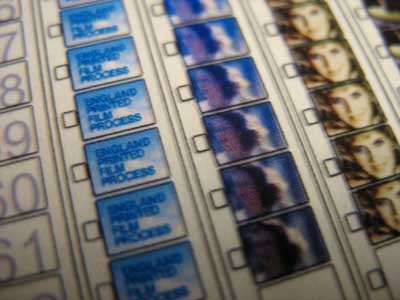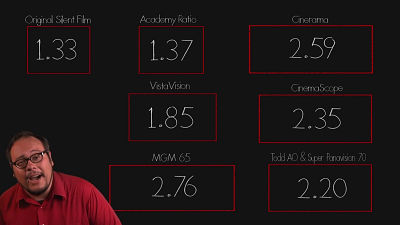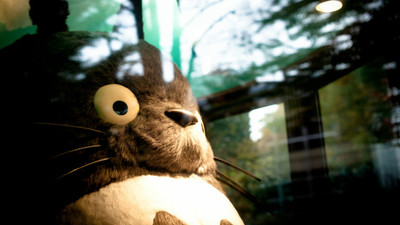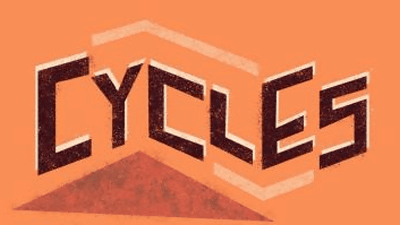The full-CG animated feature 'Toy Story' made use of not only digital technology but also 35mm film.

'
The 'Toy Story' You Remember - by Animation Obsessive Staff
https://animationobsessive.substack.com/p/the-toy-story-you-remember
'Toy Story' was advertised as the first full-length CG animated feature film. However, in 1995, the technology to directly project digital data in theaters did not yet exist. Therefore, Pixar, the studio that produced 'Toy Story,' decided to print every frame of the computer-generated images onto analog 35mm film.
Pixar's production team adjusted the digital colors assuming the film would ultimately be shown on film. For example, art director Ralph Eggleston explained that greens would appear very dark on film, so they were brightened on the monitor, and conversely, blues were desaturated so they would appear vibrant on film.
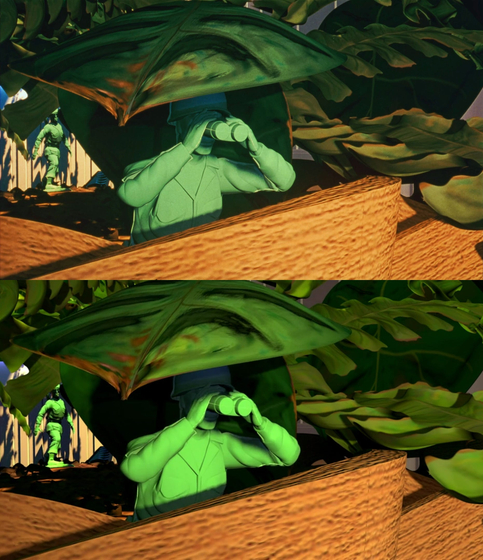
The digital-to-analog film transfer process was a laborious process, carried out by cinematographer David DiFrancesco and his team. They separated each frame into its red, green, and blue components, then exposed them three times in front of a CRT screen and burned them onto film. It took nine hours to print 30 seconds of footage.
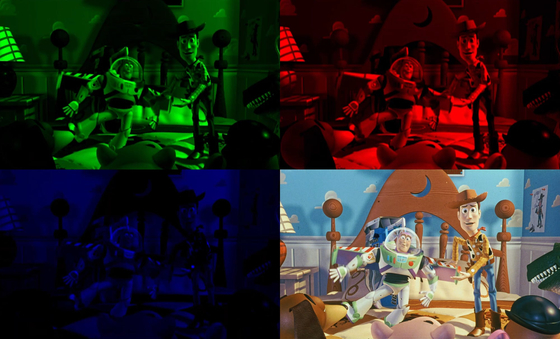
The VHS footage sold after the film's release was also initially based on this 35mm film version. However, when A
This means that the Toy Story footage available on Blu-ray and Disney+ at the time of writing looks significantly different from the film version that was shown in theaters at the time of its release. The digital version is not adjusted to be screened in dark places like the film version, so the digital version has clearer and brighter images.
Below is a comparison video created by volunteers of the film version (left) and the digital version (right), which shows at a glance that the colors are quite different.
Toy Story: Original 35mm Theatrical Print vs. DVD Digital Transfer Re-release - YouTube
This is true not only for 'Toy Story,' but also for other 1990s films such as Disney's ' Aladdin ,' ' The Lion King ,' and ' Mulan .' Because these films were also produced with the assumption that they would be screened on film, the current versions (below), which were made directly from digital data, differ significantly in color and other aspects from the theatrical release versions (above).

Animation Obsessive said the digital version available today is 'completely different' from what audiences experienced in the '90s, and that it's a bit unsettling that the version Pixar originally intended is now so rarely available. However, they said that if you ever get the chance to see the original film, it's a worthwhile experience that will confirm your memories of seeing it back then.
Related Posts:

